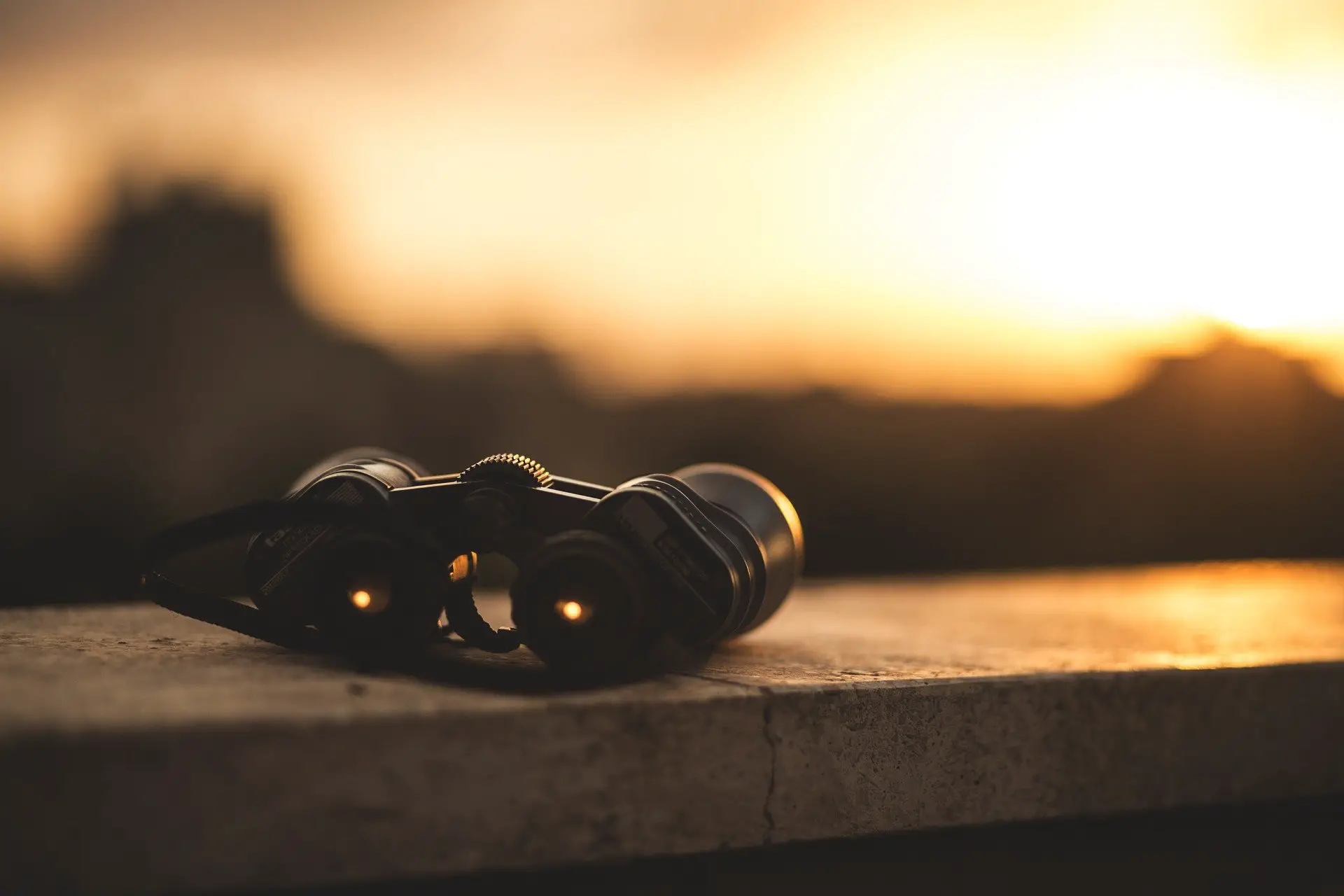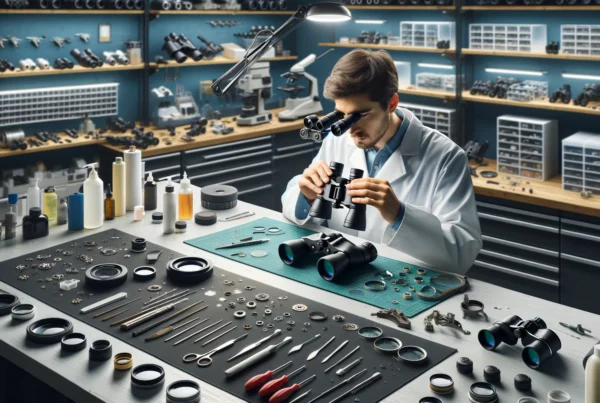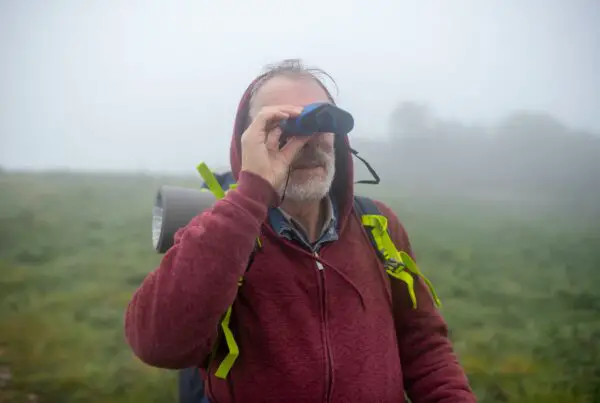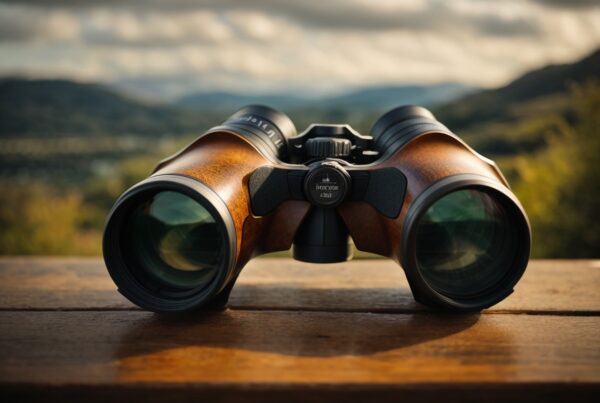Contents
- Why 6x to 10x is Common & Best Magnification for Binoculars?
- How to Determine Best Magnification for Yourself?
- What is Best Magnification for Birding Binoculars?
- What is Best Magnification for Hunting Binoculars?
- What is Best Magnification for Stargazing Binoculars?
- What is the Best Magnification for Site Seeing?
- What is the Best Binoculars Magnification for Boating?
- What is the Best Binoculars Magnification for Safari?
- What is the Best Binoculars Magnification for Sporting Events?
- Why Magnification Matters in Binoculars?
- How Magnification is Represented in Binoculars?
- Other Factors to Consider while Buying Binoculars
- Bottom Line
Choosing the best magnification for binoculars can be difficult. There are many factors that contribute to this decision, including what you plan on using them for. Some people will use binoculars for stargazing, while others may use it for hunting or birdwatching.
A good rule of thumb is to find out which purpose they will be used most often and purchase a pair with the appropriate magnification.
In general, Binoculars having 6x to 10x magnification are considered best for regular use. However, Binoculars with 8x to 10x magnification are recommended for smooth Birdwatching experience and for Hunting, 8x Binoculars work perfect while hunting in woods while 10x magnification gives you smooth stargazing experience.
Why 6x to 10x is Common & Best Magnification for Binoculars?
Many people believe that the best magnification of binoculars is 10x, but in reality, it really depends on what you are doing with them. Binoculars for stargazing should be anywhere from 6x-10x (higher magnification is better for close-up viewing).
Hunters need a larger field of view and usually use 8x or higher magnification. Birdwatchers may need to identify closer shapes or patterns and would use 7x or 8x. A large field of view helps a hunter spot animals easier while a smaller field of view is good for birdwatchers.
The best magnification of binoculars for stargazing is somewhere from around the range of 6x to 10x, although there are many who still believe that a higher magnification is better. Some people use these tools specifically for hunting or birdwatching purposes and need them to have certain features that will help them complete their tasks easier.
A large field of view is helpful to hunters, but for birdwatchers identifying shapes or patterns they need a smaller field of view. These are just some examples regarding the best magnification of binoculars and what people use them for.
How to Determine Best Magnification for Yourself?
In order to determine what is the best binocular magnification, there’s a number of factors that need to be taken into consideration including: budget, intended use and personal preferences. Magnification is one of the most important factors that you need to consider when buying binoculars. For bird watching, an ideal magnification would be anywhere between 6x-10x depending on your needs and budget.
Magnification can also determine how steady your image will appear in the lenses. A higher power magnifier means a smaller field of view while lower magnification gives you a larger field of view. So you need to consider a number of factors before choosing the best binoculars magnification for your needs and budget.
What is Best Magnification for Birding Binoculars?
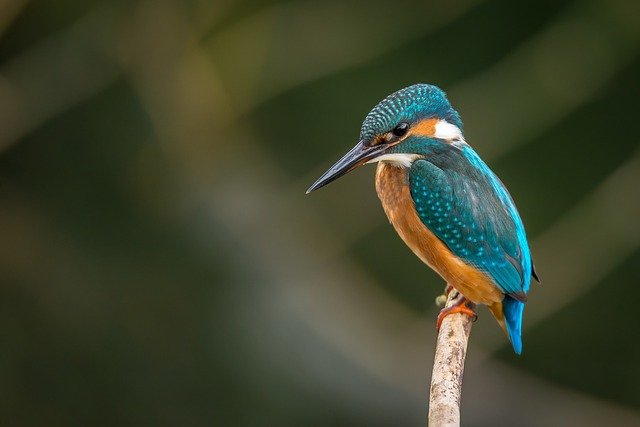
Birdwatchers need binoculars with a reasonable degree of magnification in order to get the most out of their viewing experience. An ideal pair of birdwatching binoculars would offer at least 7x magnification. If you’re looking for something that’s easier to carry along, then consider 4-6x magnification.
This magnification for birdwatching is ideal for viewing both near and distant objects. However, the degree of magnification that you will need depends on what you’re looking to get out of your birdwatching experience. If you want a closer look at birds in detail then go with something like 12x magnification.
What is Best Magnification for Hunting Binoculars?
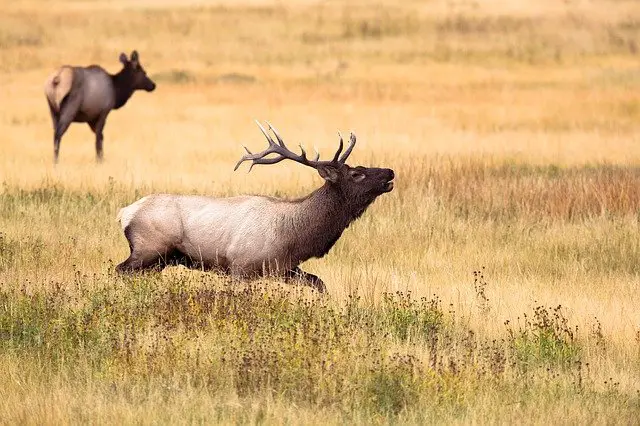
Hunting binoculars generally have a higher magnification ranging from 8x-12x, so you can get a clear view of your target from great distances. Hunting binoculars usually have the best magnification. They are perfect for scouting out your prey on a field or on a mountain.
A big downside to hunting binoculars is that they’re not as easy to carry around as birdwatching binoculars. So if you’re going to be on the go, then hunting binoculars might not be for you. If you are hunting in the woods then most suitable magnification for you is 12x. If your hunting in tall grass then magnification of around 20-25x will be helpful for sightseeing.
Deer hunters typically use high binoculars having magnification between 14-42x while turkey hunters usually use low power optics in the range of 10-18x. As for elk hunting, 10x to 12x is ideal magnification because it provides a good balance between power and weight.
What is Best Magnification for Stargazing Binoculars?
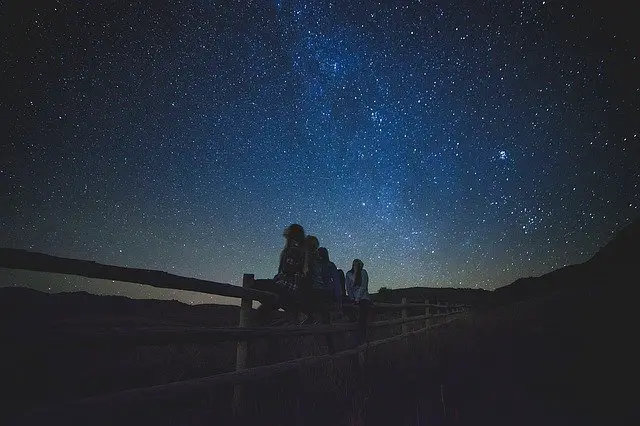
For stargazers, the best magnification of binoculars generally range from 10x to 20x. The higher the better obviously, but keep in mind that you still want to be able to hand-hold your optics for extended periods of time without straining yourself. If you’re more interested in wider views with lower degrees of detail instead, then consider a lower magnification.
In this case, you might be interested in something like a standard pair of binos with around 50x magnification, Astronomical Binoculars are very convenient for stargazing as they have the power to magnify objects up to 100 times and still remain compact enough to hold in your hands without straining yourself too much. They also make it easier to track objects as they move across the sky.
What is the Best Magnification for Site Seeing?

The absolute highest power you can find on a set of binoculars is usually somewhere between 20x-30x, which means that you’ll have an incredibly narrow field
of view. This may be great if your intended use is for hunting or birdwatching, but if you want to see more of the surrounding landscape at once then it’s not ideal.
A normal magnification would be around 13x-15x which is good enough for most site seeing purposes as well as stargazing and sky watching. You can also use a set with lower magnifications like around 12x-14x.
For general site seeing purposes, you’ll want at least 12x magnification but no more than 15 or 16 because it’s easy to cause eye strain when viewing things that are too close up for extended periods of time.
What is the Best Binoculars Magnification for Boating?

If you are looking for the best magnification of binoculars for boating, it is important to know that different magnifications are used for different purposes. If you are looking for more range, try the 8x magnification. If you are looking for close up views while boating, try a 10x magnification.
What is the Best Binoculars Magnification for Safari?

A good magnification for binoculars for safari and wildlife viewing is likely to be 8x or 10x, without sacrificing too much in terms of brightness and clarity. Moreover, it is also likely to offer a wide angle of view.
Also, compact binoculars are recommended for Safari purposes . They are easily portable and can be used for extended periods without causing any strain.
Here are some of Our Best Compact Binoculars PicksWhat is the Best Binoculars Magnification for Sporting Events?
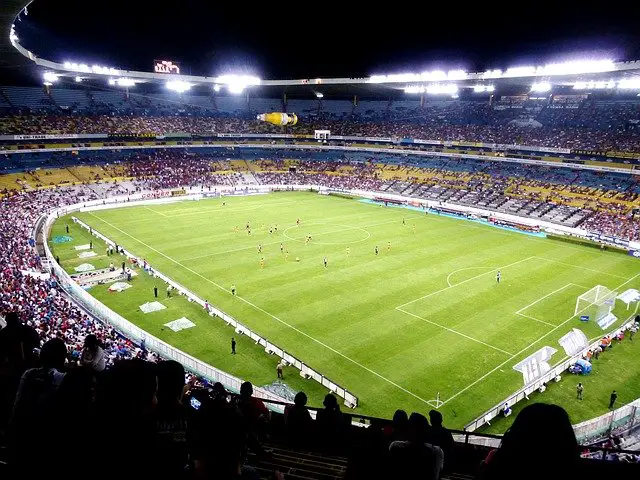
The best magnification for sporting event purposes is likely to be 5x to 10x. Also, it needs to offer a bright, clear view of the field of the playing surface. The ideal binoculars for such purposes should also be compact and light.
Why Magnification Matters in Binoculars?
Magnification serves the purpose of enlarging an image to allow for a closer, more detailed view. It is typically measured in power or diameters. One example of magnification is 10x-50x, which means the binoculars have a capacity to enlarge an object by 10 times or 50 times its original size. The magnification of a binocular, for example, affects the brightness and clarity of what you see.
How Magnification is Represented in Binoculars?
Magnification is usually represented by a number followed by the letter “X” and an optional decimal point. For example, 10x means that objects will appear ten times their normal size when viewed through the binoculars. You can also use a percentage with equivalent meaning. For instance, a magnification of 8% would make objects in the field of view eight times larger than they actually are in real life.
It can be difficult to compare magnifications across different brands of binoculars, but most manufacturers provide a table that will help you compare relative magnifications for various powers from two or more models at a glance.
Other Factors to Consider while Buying Binoculars
Type: Choose between Porro and Roof Prism. Roof prism binoculars offer a brighter and clearer image in low-light conditions because they use argon gas and don’t need to be continuously shaken before the view becomes clear.
Roof prisms also provide a shorter depth of field, which can make it easier to identify key objects in a scene, such as a bird feeding on the ground. Porro prism binoculars are less expensive but the view is not as crisp or bright.
Magnification, Lens Size, Length: If you want to look at things from far away like stars in the sky, it would be better to get a 10x-50x magnification. The lens size is also important – the larger the lens, the better your field of view will be and it can reduce eye strain as well since you won’t have to squint or blink too much.
Eye Relief: It is the distance between your eye and binoculars. If you wear eyeglasses, choose a pair with an extended eye relief of 16mm or more to ensure that the image remains sharp even when looking through corrective lenses.
More On Using Binoculars with Eye Glasses Also Check Our Eye Relief Guide for BinocularsWeight: Binoculars are typically available in different sizes, shapes, weights and styles. It is important to consider the weight of binoculars before you buy, because it will help you choose which one is best for your purpose.
Price: Price varies depending on different factors – magnification power, lens size and length, material used in construction etc. It also depends upon whether they are being bought as a child’s first pair, or are for use by a serious birder.
Brand: Some brands offer better warranties than others, so it is best to buy binoculars from trusted companies. It may be more expensive but you can depend on them if anything happens to your optics.
Bottom Line
The best magnification for binoculars depends on the purpose. For example, if you’re birdwatching, it might be better to use a lower magnification that allows you to see more of the horizon and landscape around you.
If your goal is hunting or stargazing then higher magnifications would be necessary because they increase range and field of view respectively. So how do we know what the best magnification for binoculars is? By considering your needs and deciding which will serve those needs most effectively!

A Binoculars enthusiast, who love exploring skies and watching birds. It is my hobby to collect Binoculars of different kinds and try to explore the world through various lenses. This is all I do to explore happiness by magnifying my beautiful world.

